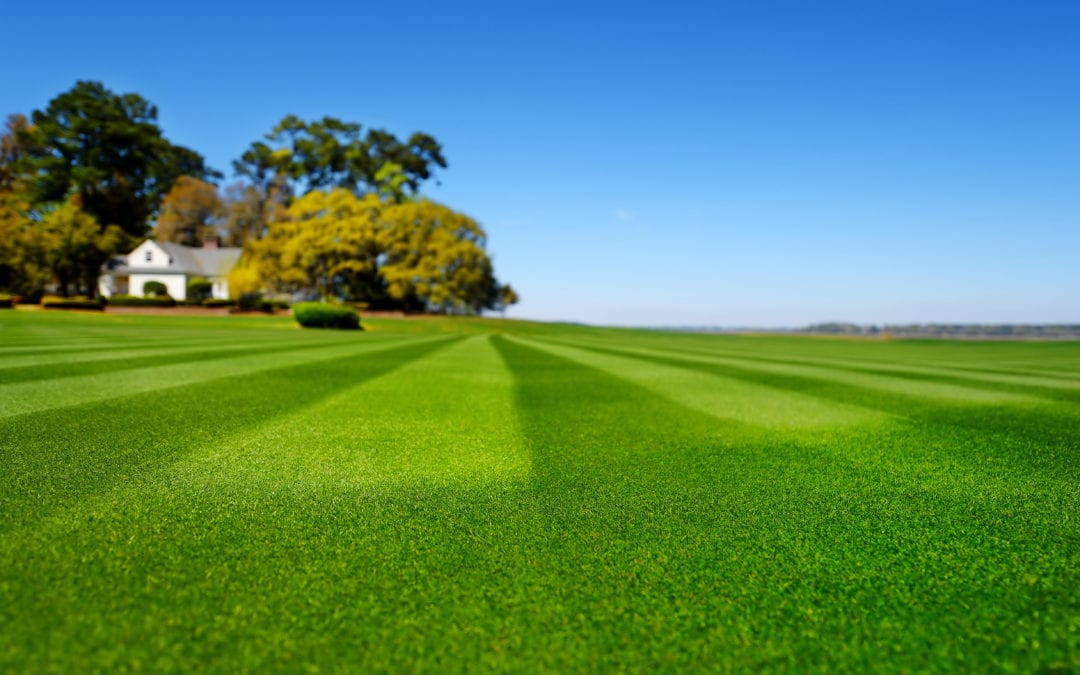Don’t you just love to look at the lawn striping in professional baseball stadiums? It’s so green and lush. Checkerboards, an arch, curves, waves, a crown, a flag, diagonals and a mix of directional grass-art have overtaken the fields of MLB stadiums. It is beautiful and almost hypnotic to enjoy. Fortunately for lawn care enthusiasts, it’s easier than you think.
Lawn Mowing Creates Those Coveted Stripes
Lawn stripes occur by bending the grass into different directions with your lawn mower. It’s not an optical illusion. Rather, it is basically just light reflecting off the blades of grass blades bent in opposite directions. Grass bent towards you looks dark while the grass away from you look lighter.
Mowing your lawn and striping it is actually good for your grass! It can become healthier by striping. Mowing in the same pattern and same direction all of the time creates uneven spots and ruts. Striping allows the sun to nourish all portions of your lawn.
It is best to change the striping pattern every two weeks for premium striping effect. Also, avoid mowing or striping when your grass is wet. Not only will it jam your lawn mower blades, it will create a matted look, not the stripes you desire.
It is best to mow in a straight line. Start off by mowing parallel to a straight sidewalk, fence or driveway. Keep your eyes straight in front of you, approximately 8-10 feet ahead. When you come to the end of your row, lift the mower deck as you turn, then mow in the opposite direction of your last pass.
Best Grass Type for Lawn Striping
Cool season types of grass tend to work better. These would include fescue, bluegrass or rye. Bermuda and zoysia grasses are considered warm weather grasses. While with some work and a yard roller you may be able to get stripes, but they will not be as visible as the cool season grass nor will the striping last as long.
Grass height is another factor is having a professional looking lawn stripe. In the fall and spring, a grass height of 2 ¾” is best, while in the heat of the summer 3 ½” will protect the lawn from the heat. The higher the grass, even as much as 4” in height, the more dramatic the striping will appear. Thicker grass is healthier grass, so keeping weeds out and a thick carpet of grass will enhance the striping effect. Some professionals claim that cutting twice is the secret, with the second pass lowering the blade ¼”.
Lawn Care Stripes by Executive Lawn Care
In the beginning, striping will take practice. You may get a few chuckles out of your first attempts, but do not be discouraged. Once you get good at it, you can try the checkerboard pattern by mowing the lawn a second time at a 90-degree angle from your first mow.
However, if you don’t have the time to pin down this technique and still want a well-manicured lawn, Executive Lawn Care can help. Our residential services will ensure a healthy, gorgeous Dallas lawn, year-round. Contact us today to get your lawn on our schedule!


